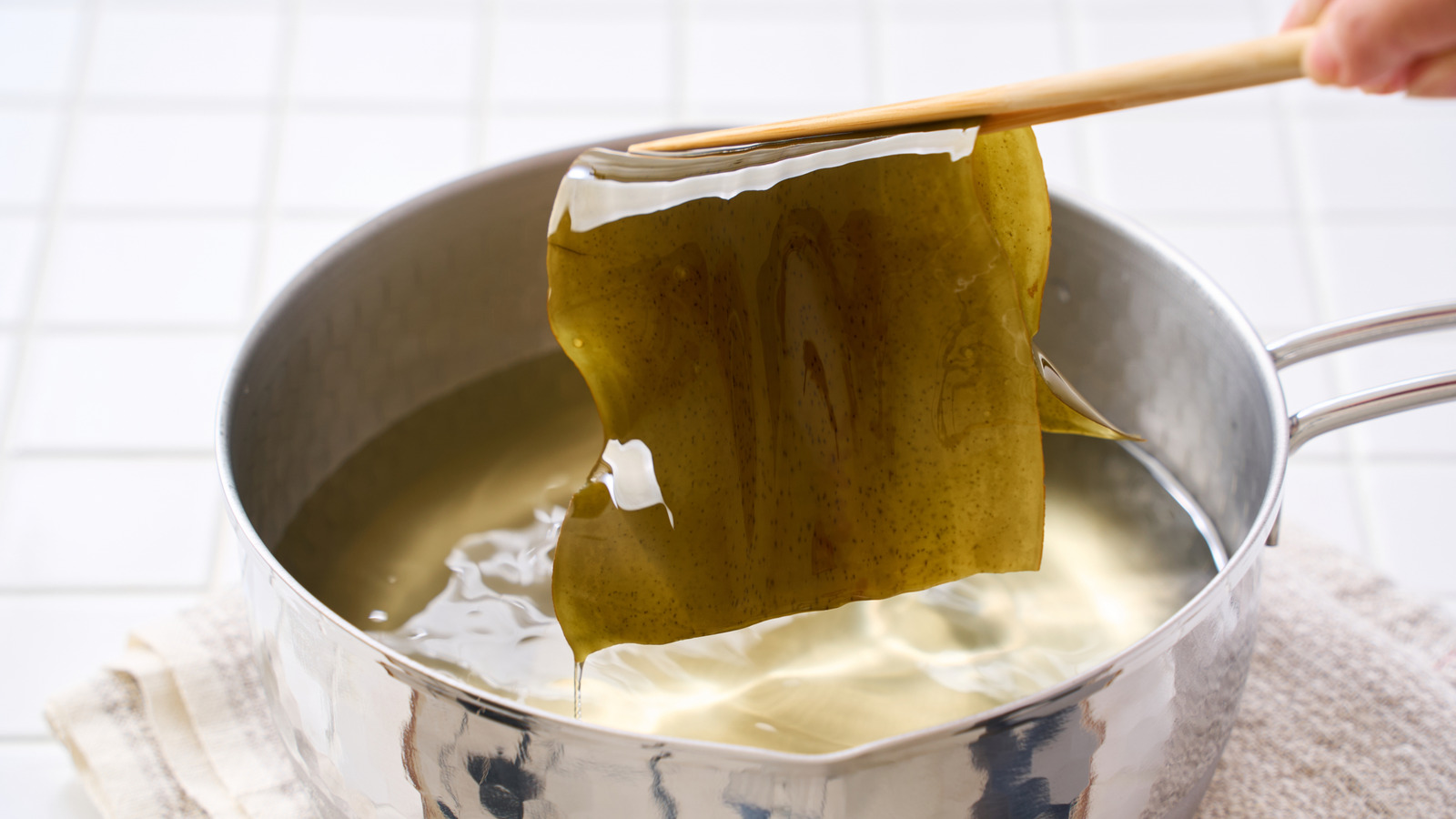
"Simple as they are to make, and hearty when they're made just right, sometimes, the flavor of your soup just falls a bit flat. If you just so happen to have this secret ingredient handy, no matter what it is that's cooking on the stove - be it a hearty minestrone or a chicken noodle soup - you can fix its flavor in a pinch. It's called kombu, and it's one heck of an umami powerhouse."
"Kombu is the catch-all term for certain types of edible kelp or seaweed rich in natural MSG - the same compound responsible for the umami flavor. East Asian kitchens have sworn by this flavor secret for over 1,200 years (possibly even as far back as 15,000 years ago), and honestly, it's time you got in on it too. Even the most boring, water-like soup gets a serious upgrade with just a hint of this umami magic."
"So, how exactly do you use it? Well, you'll need to make what's called a kombu dashi, which is a soup stock that you can get when you "cook" a piece of kombu in hot water. Add the stock one tablespoon at a time into your soup until it tastes right (but the vibe's particularly sublime when you combine it as a base for Japanese-inspired dishes, like miso soup)."
"As awesome as it is, the bad news is that if you're looking for a "one and done" ingredient, then kombu isn't it. You'll need to prepare it very carefully, or else, your kombu dashi is going to taste bitter instead of having the super-savory you were hoping for. Let's say you've got a piece of kombu on the countertop right now, the first thing you need to do is cleaning it."
Kombu is edible kelp rich in natural glutamates that provide strong umami flavor. East Asian kitchens have used kombu for centuries to boost soups. Making kombu dashi involves simmering a piece of kombu in hot water to extract savory stock. Add the dashi to soups one tablespoon at a time until the desired taste is reached; it pairs especially well with Japanese dishes like miso soup. Kombu must be cleaned before use to remove a natural white powder called mannitol. Improper preparation or overheating can produce bitterness, so gentle handling and correct cleaning preserve the savory quality.
Read at Tasting Table
Unable to calculate read time
Collection
[
|
...
]